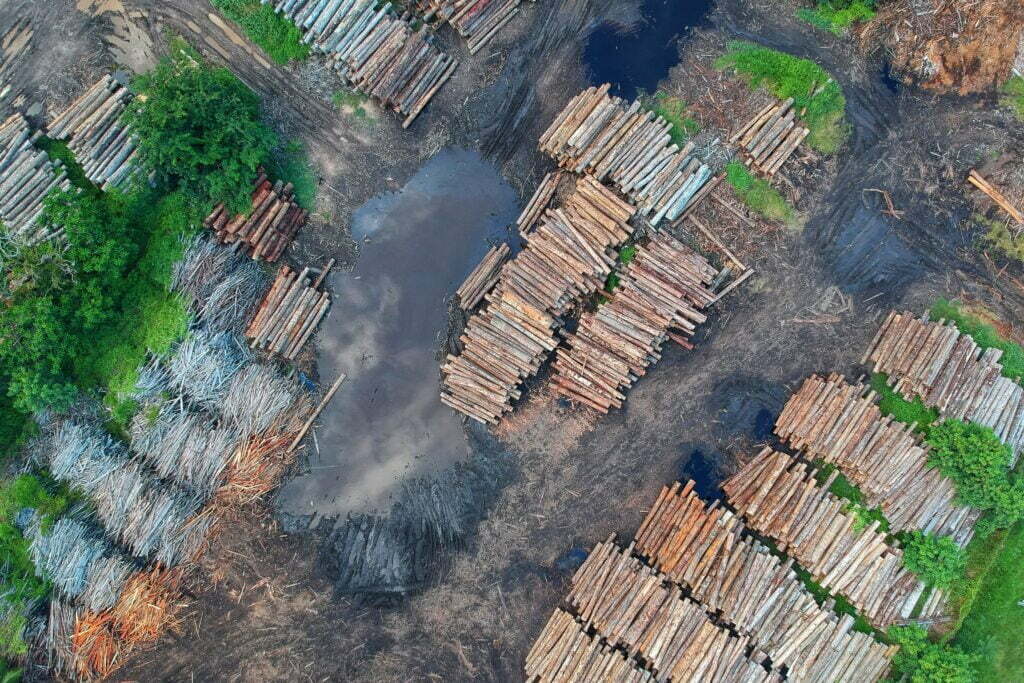How can we stop deforestation? According to OECD, the human population is expected to continue to increase and reach over 9 billion people by 2050. At the current rate of consumption, and with more people inhabiting Earth, the need for more space to grow food and extract natural resources is only likely to increase – depending, of course, on tech development such as artificial foods. As the demand for food or raw materials like cotton or minerals increases, so does the need to turn forests into farmland, pastureland, or mining spots. Under this broader perspective, how can we stop deforestation?
1. Eating Less Meat
How can we stop deforestation? According to the WWF, livestock-caused deforestation is responsible for the discharge of 3.4% of current global emissions of carbon to the atmosphere every year. That’s why the late 2018 IPCC report stood out that reducing meat consumption by 90% is the single biggest way to reduce global warming.
Some studies also show that without meat and dairy consumption, global farmland use could be reduced by over 75%. In this way, reducing your meat consumption is also a big step to stop not only deforestation but also global warming on a larger scale. Remember: a lot of space is needed to grow both animals and the food they consume, while other nutritious foods could be grown and result in larger food quantities using the same space. Why not saving meat for important occasions only?
2. Consuming Less and More Consciously
As consumers we can choose to buy less industrial and transformed products such as cookies, crips, noodles or cosmetics that use plenty of palm oil. Instead, we can go for a home-made approach with fewer chemicals and food preservatives which is better for both the planet and our health.
However, if you are not willing to make such changes – because they are time consuming – you can still consume more responsibly while keeping your lifestyle. To this regard, you can buy products from brands adopting eco-friendly business practices. When it comes to food, buying directly to small farmers using agroforestry practices is the best choice for the planet.

3. To Stop Deforestation, When You Consume: Use, Use, Use
Your smartphone, your laptop or your car, to name a few, are all made of aluminium, plastic and rare Earth minerals, among other materials. To get these, (just like foods like coffee or cacao) land was clear to build mining sites, roads and factories and where built to transport and transform them, powerplants provide them with energy…
The longer we use our products for, the higher the changes that demand doesn’t grow (it won’t likely decrease either – there are more people in the planet every day). Economically-speaking, if the demand doesn’t grow, production won’t grow either and it it is not necessary to clear more space to extract natural resources and build human infrastructures might, deforestation (and carbon emissions from the industry) might just not increase.
4. Leaving Fossil Fuels and Palm Oil Behind
Nearly half of UE’s imports of palm oil are used as biofuels – although proposals to ban subsidies are currently under debate. Since diesel and petrol are mixed with biofuels, choosing other transportation methods such as walking, cycling or car-sharing can be good ways of reducing palm oil importations (and production) and to help stop deforestation.

5. Lead by Example and Spread Awareness
If you start adopting the behaviors mentioned above to help stop deforestation you can lead by your example. Teach your family, friends or colleagues what deforestation is and why it is happening, the causes and consequences of deforestation, and what solutions individuals, consumers and organizations can adopt.
A Broader Perspective: How can we stop deforestation?
Apart from people’s individual contributions to stop deforestation, from a political and systemic perspective, other more direct and hands-on actions approaches can be taken:
- Fighting illegal logging and limiting logging in old-growth forests
- Protecting forested areas by creating laws and policies that ensure forests are kept protected and restored and betting on land practices such as wildfire corridors
- Reforming trade agreements, starting to value differently products obtained through deforestation, and creating incentives for the use of sustainable forestry certifications such as FSC
- Educating local communities and tourists about the need to protect forests and develop and enroll in ecotourism activities.
What are people doing to stop deforestation?
What is being currently done do stop deforestation? Efforts to replant deforested areas are taking place every day. Unfortunately, some replanting is done with the goal of quickly growing trees to be exploited in the short-term by the logging industry. These often consist of monotypic plantations (less resilient, more appealing to harmful environmental management practices) such as eucalyptus or pines. This is no small effort: there are 1.3 million km2 of these plantations on Earth, according to FAO.
At the same time, efforts to stop deforestation using more ecological management practices are also underway thanks to forest protection NGOs, eco-villages, UN initiatives and workgroups, and national governments such as New Zealand’s.
(5 solutions on https://youmatter.world)


